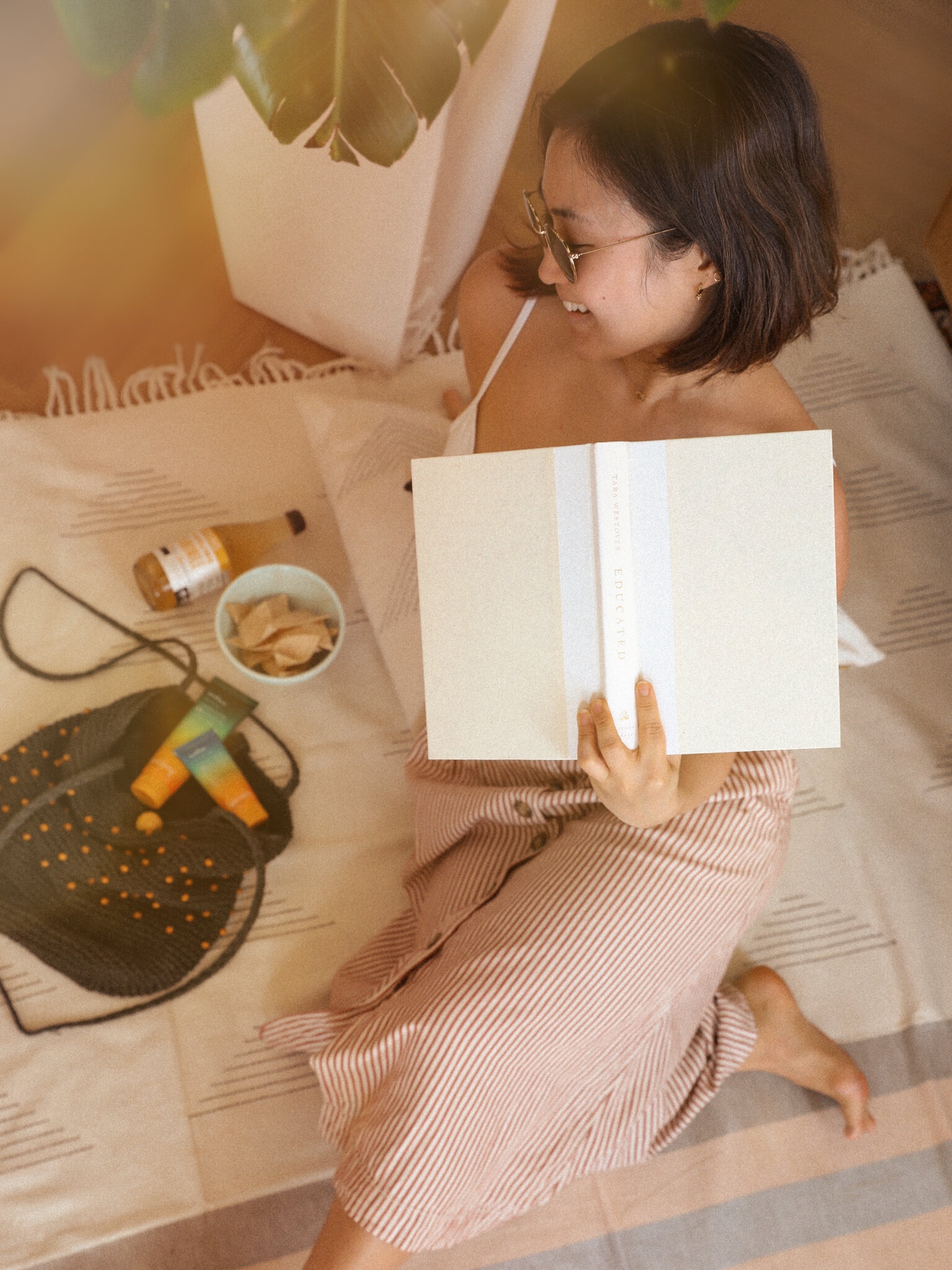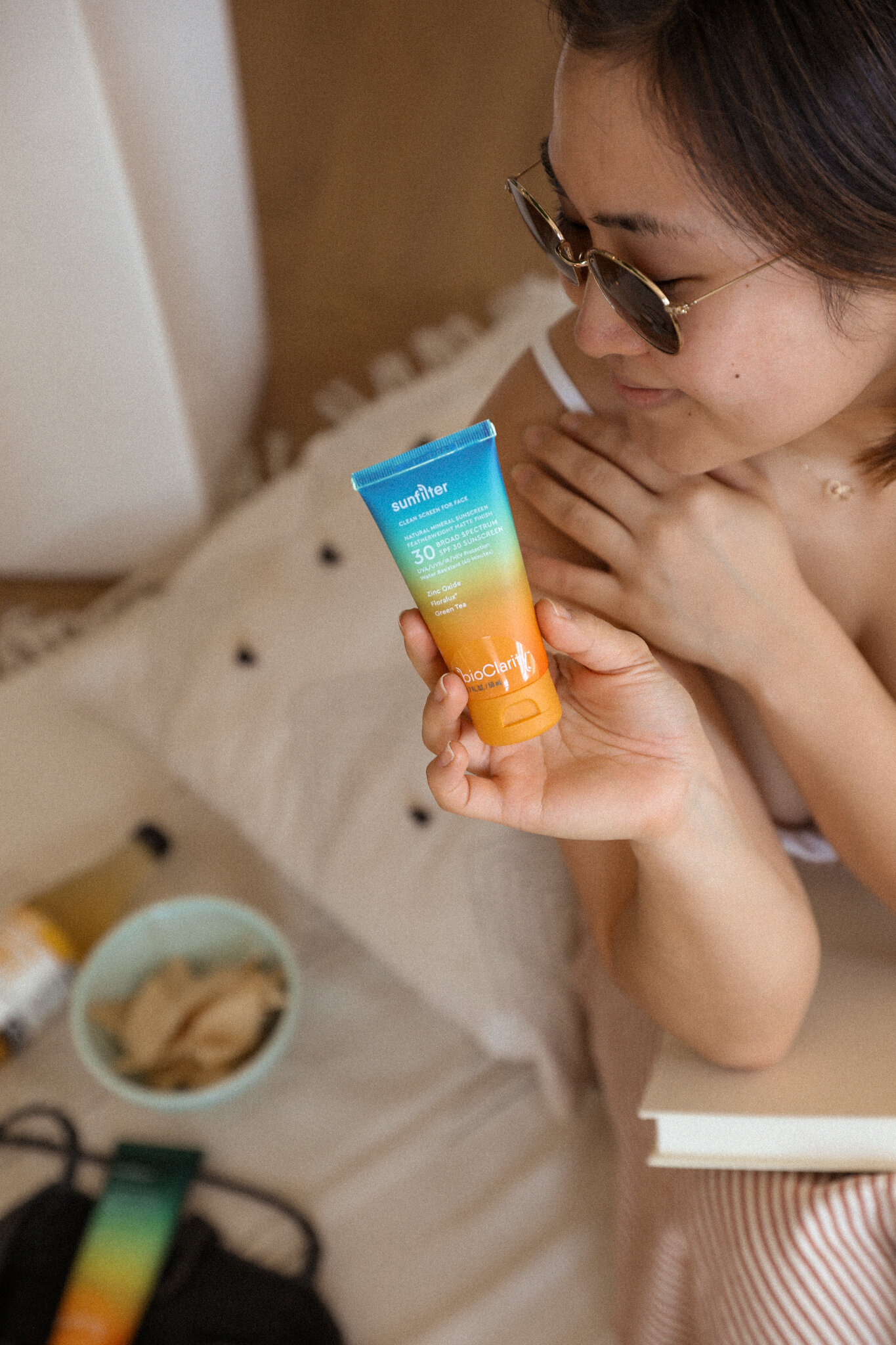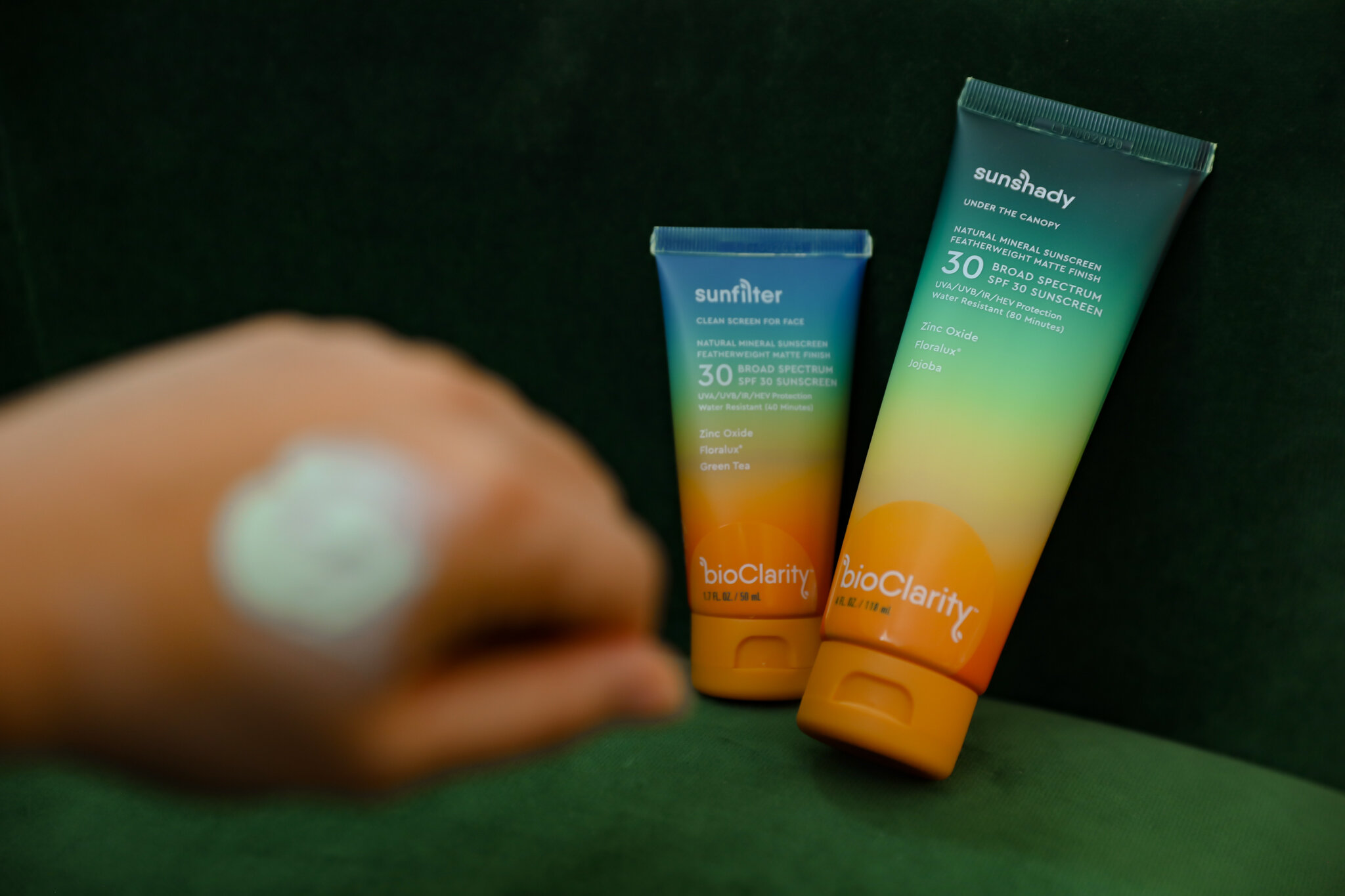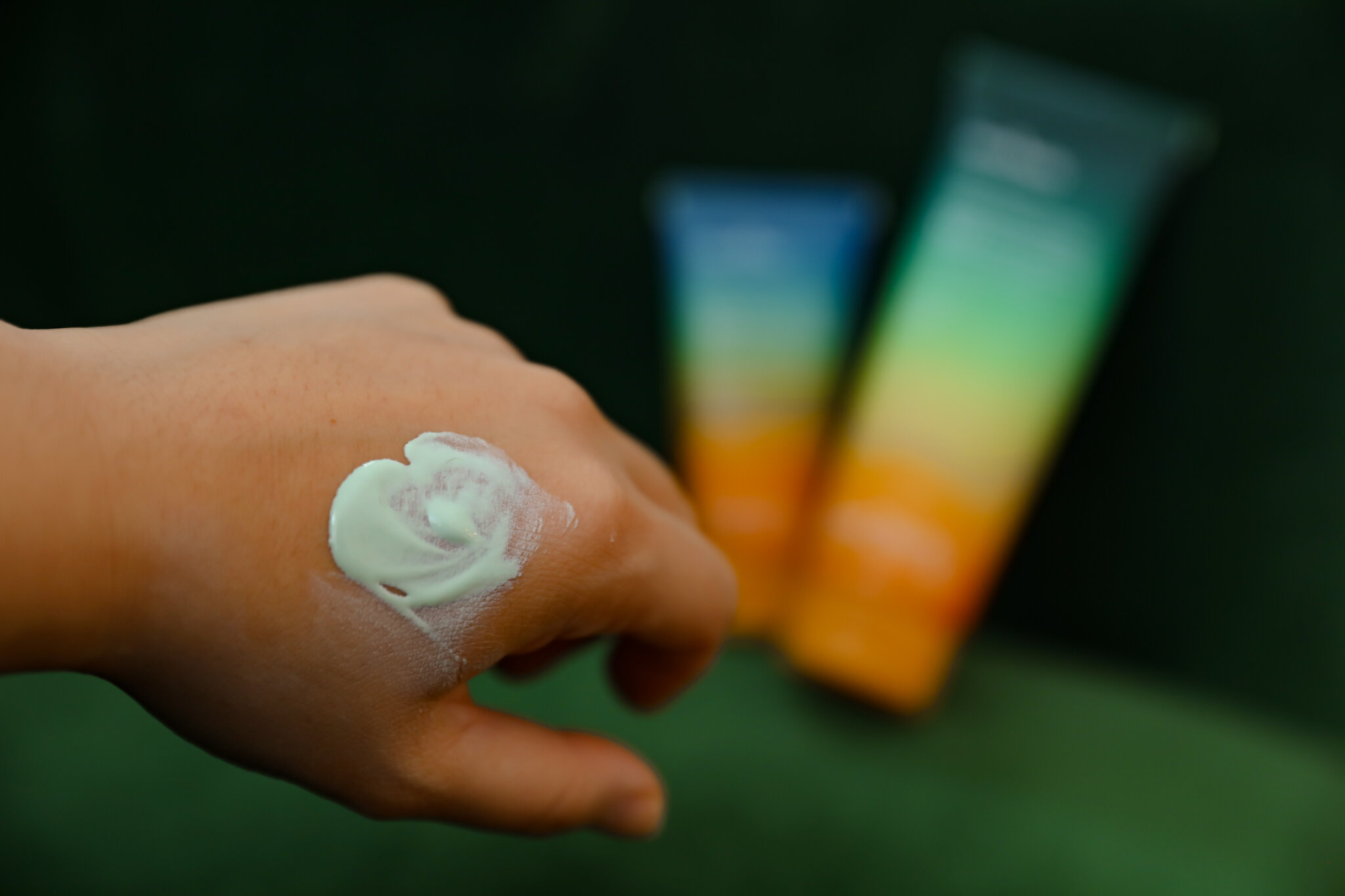Sun Safety Guide + Clean Sunscreen 101
Aside from the one time I used a tanning bed in high school (temporary insanity, otherwise known as peer pressure as a 15 year old girl), I’ve always been pretty aware of the importance of sun safety. My dad, a sun-worshipper, had a few cancerous moles removed, so I knew that sun safety was important.
But the problem was, I had (and still have) pretty temperamental skin with my hormonal acne. So it'd be pretty frustrating for me to wear sunscreen that made me break out or to reluctantly wear sunscreen without the cleanest ingredients in it. That’s why I’m so thrilled that my go-to brand for simple, accessible clean + green beauty, bioClarity, just launched both a face + body sunscreen!
BUT before we dive into details about that, I wanted to share my tips on how to practice proper sun safety, and what to look for in a clean sunscreen:
Ways to Practice Proper Sun Safety
SHADE:
Whenever you’re outdoors, it’s helpful to try to shade yourself from being exposed to direct sunlight for prolonged periods of time. Umbrellas, awnings, and trees are helpful to reduce some sun exposure.
PHYSICAL BARRIERS:
Hats + clothing (long-sleeves, pants) can provide some protection, particularly clothing with tightly woven fabric. Sunglasses are very important for eye safety (reduces UV exposure + the risk of cataracts), as well. When it comes to clothing, darker colors offer a bit more protection than lighter-colored clothing, but all in all, a typical shirt has an SPF rating lower than 15, which leads me to the importance of wearing sunscreen no matter what!
SUNSCREEN:
Broad-spectrum sunscreen works by filtering out UV radiation, and how it works depends on the type of sunscreen!
Sunscreen 101 + FAQ’s— What to Look for in Sunscreen
WHAT DOES SPF MEAN?
SPF stands for “Sun Protection Factor.” Different sunscreens are given SPF grades that indicate their effectiveness in blocking UV rays. While the CDC recommends a minimum of SPF of 15, I always try to use something with a minimum SPF of 30. The effectiveness of SPF will also vary depending on your skin tone, with fairer skin needing more protection.
WHAT DOES BROAD-SPECTRUM MEAN?
Broad-spectrum protection means that the sunscreen protects from both UVA (causes photoaging, wrinkles, age spots, and is 95% of the UV radiation that reaches our skin) + UVB (causes sunburns and are generally more harmful) rays. Protection from both is important, as both can cause skin cancer. bioClarity’s Defense Duo is broad-spectrum, protecting from not only UVA + UVB rays, but also IR (infrared radiation) + HEV (high-energy visible light, aka blue light from screens) rays— talk about covering all the bases, literally 😉
WHAT IS THE DIFFERENCE BETWEEN MINERAL + CHEMICAL SUNSCREENS?
Ingredients that make up mineral sunscreen, such as zinc oxide, are considered “physical” sunscreens because they form a physical barrier that reflects or scatters UV waves. Chemical sunscreens, such as avobenzone, oxybenzone, and octinoxate, absorb UV rays and release their energy back off of the skin as heat.
bioClarity’s Defense Duo is a mineral sunscreen, using non-nano zinc oxide to provide broad-spectrum protection. Mineral sunscreens like zinc oxide and titanium oxide do not penetrate the skin, and simply form a physical barrier.
On the other hand, some chemical-based sunscreens, such as oxybenzone and octinoxate, have been proven to be endocrine disrupters by the EWG because they act as synthetic estrogen that penetrates the skin and enters your system. Not ideal for hormonal balance, especially with repeated use!
WHAT DOES NON-NANO ZINC MEAN?
Non-nano zinc does not absorb beyond the surface of your skin (i.e. won’t go in your bloodstream), and is considered to be safer for consistent topical use.
WHY SHOULD I CHOOSE A REEF-SAFE SUNSCREEN?
Certain chemical sunscreens, such as oxybenzone and octinoxate have been proven to harm marine life, and are toxic to the health of coral reefs. When people wearing chemical sunscreens like this enter the ocean, it introduces these harmful chemicals to aquatic life and endangers the ecosystem. Choose a mineral-based sunscreen like bioClarity’s Defense Duo, because not only is it reef-safe, it is also vegan and cruelty-free!
On a personal front, I’ve tested out a LOT of clean sunscreens, thanks to my job. The SunFilter face sunscreen has become my favorite for multiple reasons— it doesn’t make me break out because it’s non-clogging, it has nourishing jojoba seed + plant-based squalane to keep my skin moisturized, and is antioxidant-rich to help protect from free radicals too. It’s also got a nice green tint that works well as a makeup base, and rubs in more easily than a lot of other zinc-oxide sunscreens I’ve tried that usually leave your skin super white from the minerals.
A huge thanks to bioClarity for partnering on this post to spread sun safety education, and for offering you guys 15% off all their non-toxic, vegan, green skincare with code MINNA!
As always, all opinions are 100% my own. Thanks for supporting the partners that make this blog possible!

















